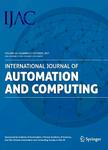Rotorcraft with a 3DOF Rigid Manipulator:Quaternion-based Modeling and Real-time Control Tolerant to Multi-body Couplings
Rotorcraft with a 3DOF Rigid Manipulator:Quaternion-based Modeling and Real-time Control Tolerant to Multi-body Couplings作者机构:Polytechnic Institute of Advanced SciencesFR 94200 ParisFrance Univ.Grenoble AlpesGIPSA-LabFR-38000 GrenobleFrance Autonomous University of Puebla(BUAP)Faculty of ElectronicsMX 72570 PueblaMexico University of Limoges ENSIL-ENSCIXLIM Laboratory UMR CNRS 7252Parc Ester Technopole16 rue AtlantisLimoges 87068France FEMTO-ST InstituteUMR CNRS-UFC/ENSMM/UTBMAutomatic Control and Micro-Mechatronic DepartmentFR BesanconFrance
出 版 物:《International Journal of Automation and computing》 (国际自动化与计算杂志(英文版))
年 卷 期:2018年第15卷第5期
页 面:547-558页
核心收录:
学科分类:080202[工学-机械电子工程] 08[工学] 081105[工学-导航、制导与控制] 0804[工学-仪器科学与技术] 082503[工学-航空宇航制造工程] 0802[工学-机械工程] 0825[工学-航空宇航科学与技术] 0811[工学-控制科学与工程]
基 金:supported by CONACYT-Mexico,Lab Ex PERSYVAL-Lab(No.ANR-11-LABX-0025) Equipex ROBOTEX(No.ANR-10-EQPX-44-01)
主 题:Observer-based control quaternion and Newton-Euler modeling bounded-input control aerial manipulator disturbancerejection.
摘 要:This paper proposes a simple solution for the stabilization of a mini-quadcopter carrying a 3DoF(degrees of freedom) manipulator robot in order to enhance its achievable workspace and application profile. Since the motion of the arm induces torques which degrade the stability of the system, in the present work, we consider the stabilization of both subsystems: the quadcopter and the robotic arm. The mathematical model of the system is based on quaternions. Likewise, an attitude control law consisting of a bounded quaternion-based feedback stabilizes the quadcopter to a desired attitude while the arm is evolving. The next stage is the translational dynamics which is simplified for control(nonlinear) design purposes. The aforementioned controllers are based on saturation functions whose stability is explicitly proved in the Lyapunov sense. Finally, experimental results and a statistical study validate the proposed control strategy.



